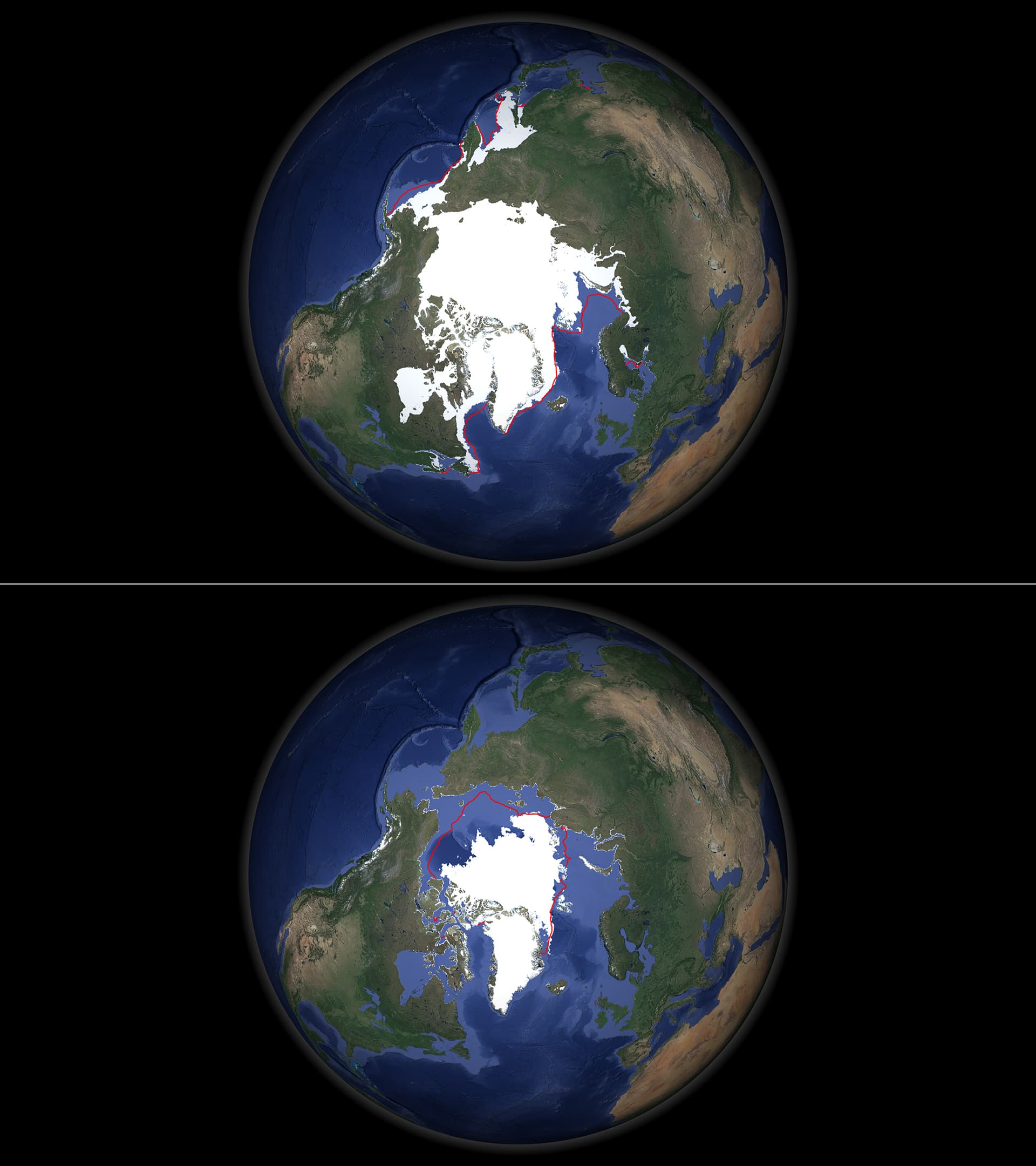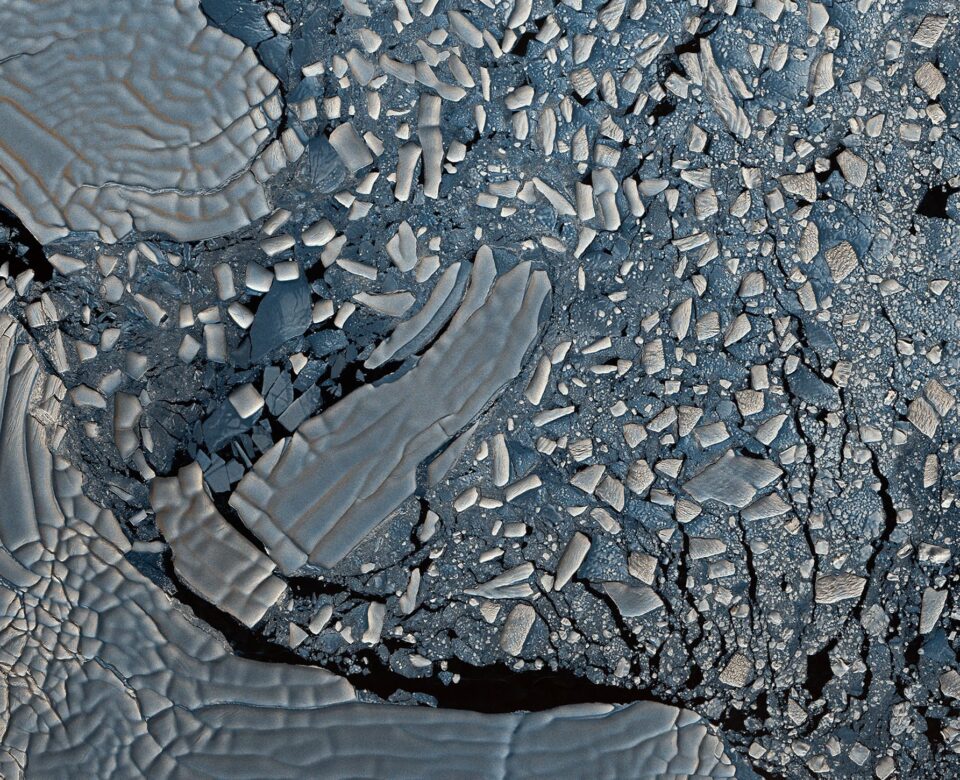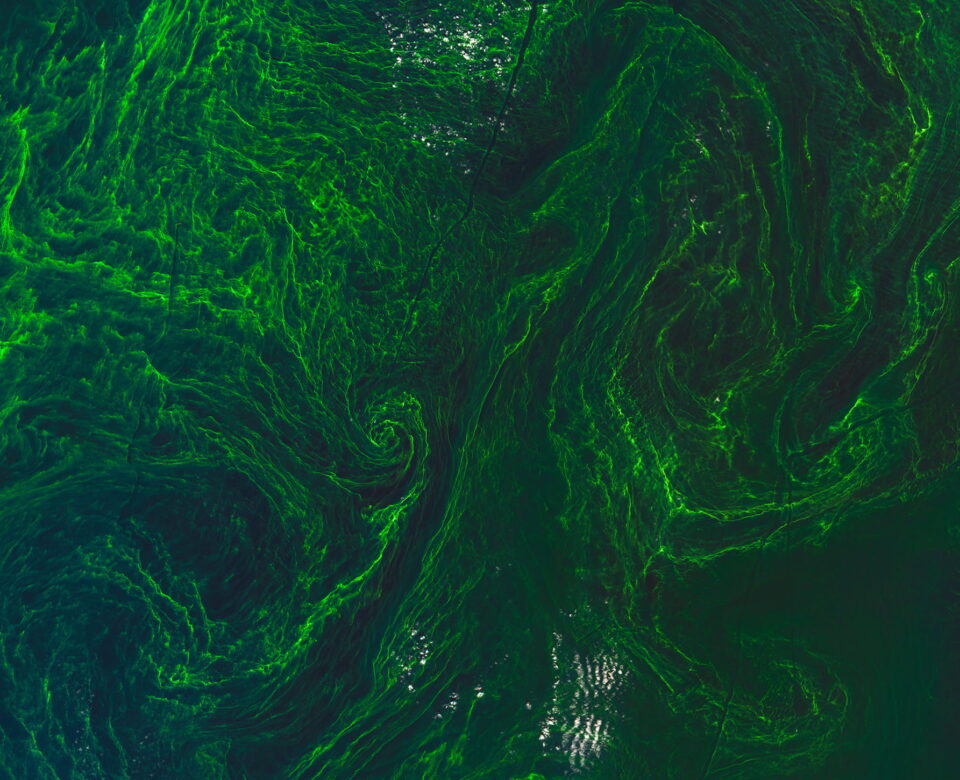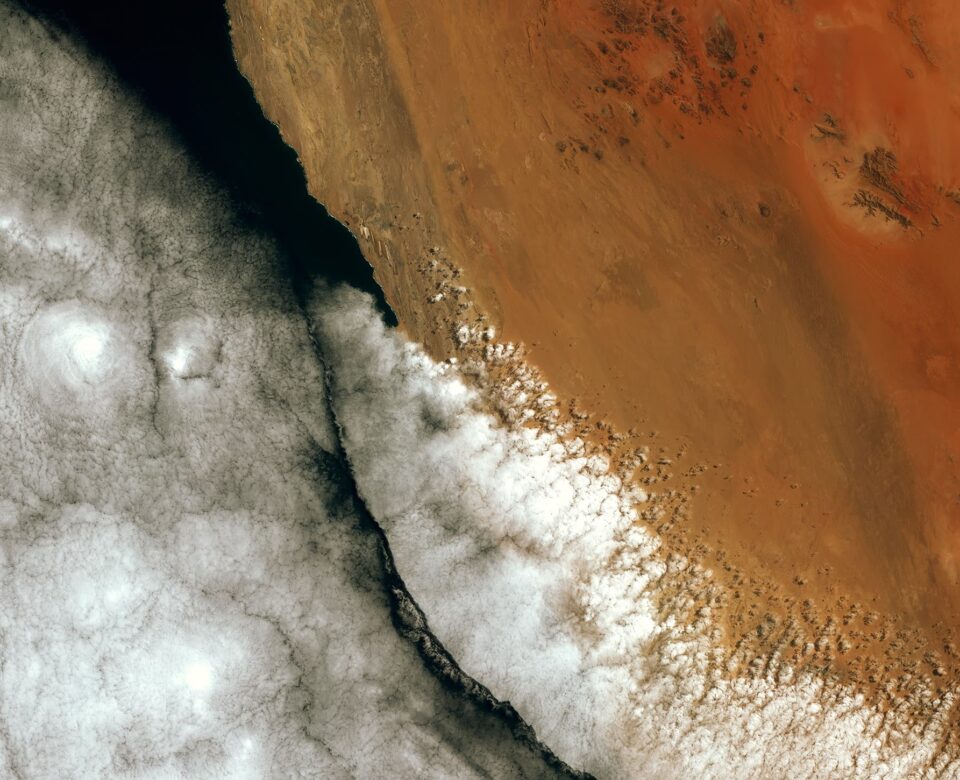
An Icy Farewell
March 13, 2024The Arctic
Revealed
Sea ice off the east coast of Greenland
In this image captured by the Copernicus satellite Sentinel-2, small pieces of sea ice, known as ice floes, trace out the ocean currents beneath, resulting in a large swirl-like feature of approximately 120 km in diameter off the east coast of Greenland.
© Sentinel-2, Copernicus, ESA
ICE
Arctic sea ice is the frozen layer of the Arctic Ocean that reflects sunlight and regulates heat exchange. It has shrunk by 12.2% per decade since 1979, reaching its second lowest extent in 2021. Satellites track sea ice changes, such as extent, age, and thickness, and their effects on wildlife, human activities, and weather patterns.

Paolo Cipollini
Ocean and Ice Senior Scientist
European Space Agency - ESA



